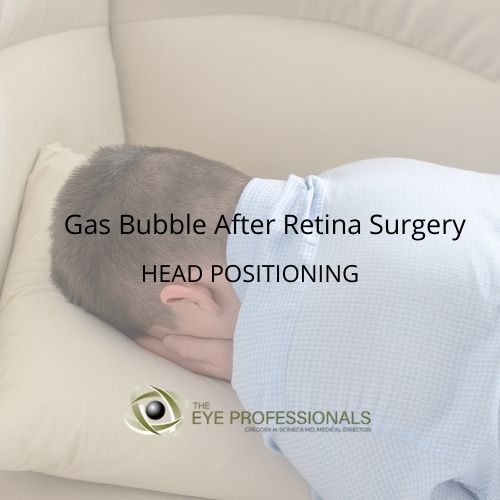Gas Bubble for Retina Surgery


Your retina specialist may inject a gas bubble to fix your retina.
Many retina repairs require direct access to the torn, scarred, detached, or damaged retina. To do that your retina specialist will perform a vitrectomy and remove the vitreous humor gel, repair the retina, and then inject a gas bubble to wall off the repaired retina to allow it to heal.
The Procedure is Painless
In most cases, you receive IV sedation that will put you into a twilight state in which you are conscious but extremely relaxed, then your eye will be numbed. On occasion, general anesthesia may be required.
Why a Gas Bubble?
The bubble doesn’t always have to be a medical gas, it could be just air. The type of bubble depends on your repair and how long the bubble needs to remain in your eye. The gas bubble needs to remain in your eye for as long as it takes to heal the repair and not longer.
Your retina specialist will choose the type of gas depending on the retina repair you had and how long your retina needs to be walled off from inflammatory fluids. The gas is used to prevent the subretinal fluid that naturally seeps from the inflamed tissues from reaching the area behind your repaired retina.
Gas Bubble Absorption
Gas used in retina surgery does not have to be removed. It will absorb slowly on its own.
A bubble of air consists mostly of nitrogen and oxygen with small amounts of argon and carbon dioxide. Air will absorb in 5 to 7 days. The other common gases used for retina surgery are sulfur hexafluoride (SF6), which dissipates in 10 to 14 days, and perfluoropropane (C3F8) which dissipates in 55 to 65 days.
Vision with a Gas Bubble
The bubble makes everything badly out of focus. As the bubble dissipates to about half size you will be able to see a horizontal line across your vision. This is where the gas bubble and your natural fluid (aqueous humor) meet. As your eye refills with aqueous humor and the bubble continues to dissipate the line will move lower day by day until the gas bubble completely dissipates.
Cautions
As long as there is a gas bubble in your eye you must not fly in an aircraft or travel to higher altitudes. The reduced pressure in the cabin of an aircraft or at higher elevations, will cause the gas to expand and increase the pressure in your eye. This would be extremely painful and may lead to loss of sight.
If you must have general anesthesia for a surgical procedure during the time the bubble is in your eye, you must tell the anesthesiologist that you have intraocular gas so nitrous oxide will not be used as a general anesthesia. Nitrous oxide will migrate into the eye and cause a dangerous rise in the pressure in your eye.
Head Positioning
You may be asked to keep you head face down during recovery. This is to ensure the gas bubble stays in place. There are face down pillows, chairs, and mirrors that allow you to see around the room while in a face down position. Your insurance may cover the cost of face down assistive devices.
Recovery
Your recovery time depends on the severity of your retina repair. It can range from two weeks to several months if you had a detached retina repaired.
